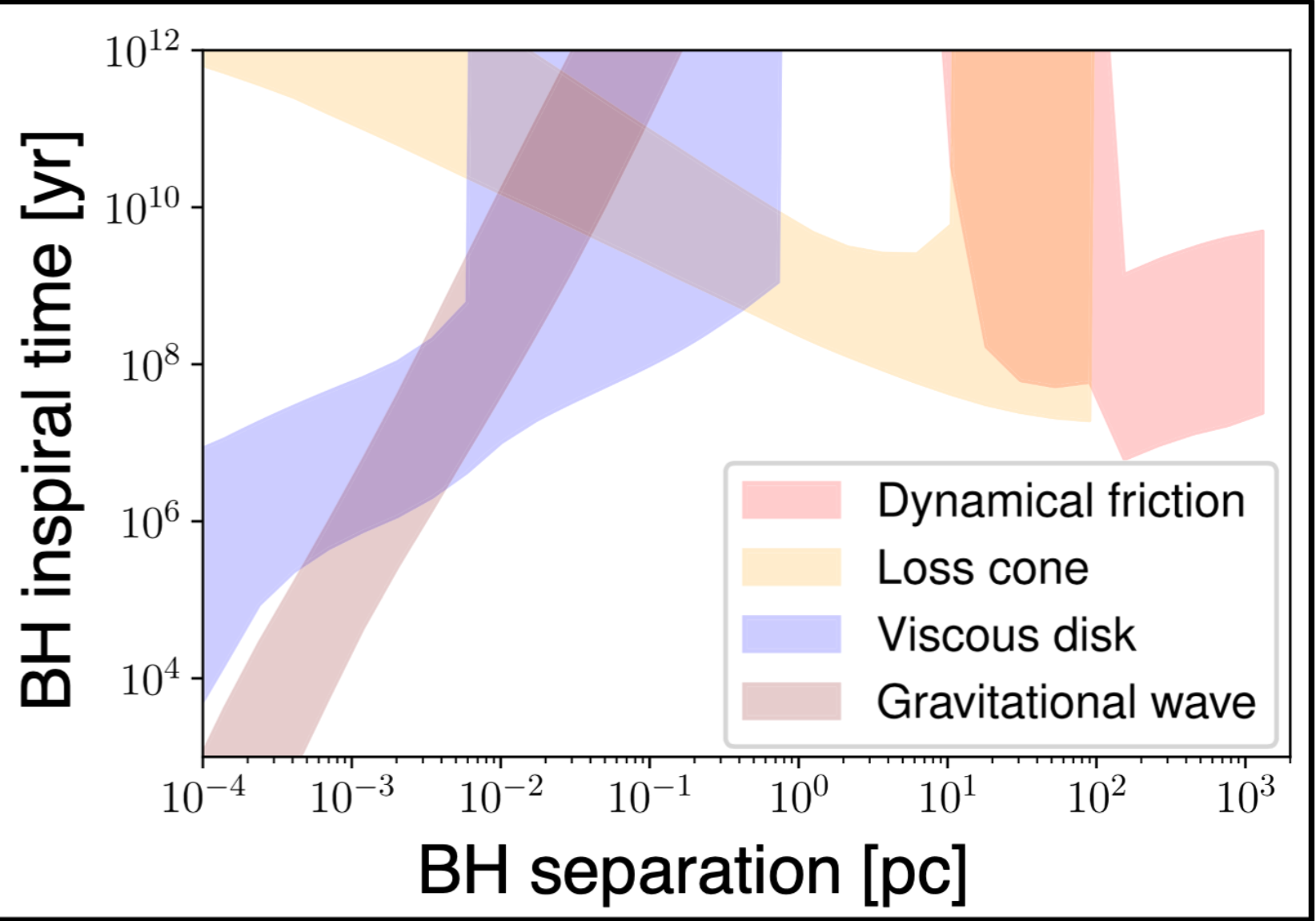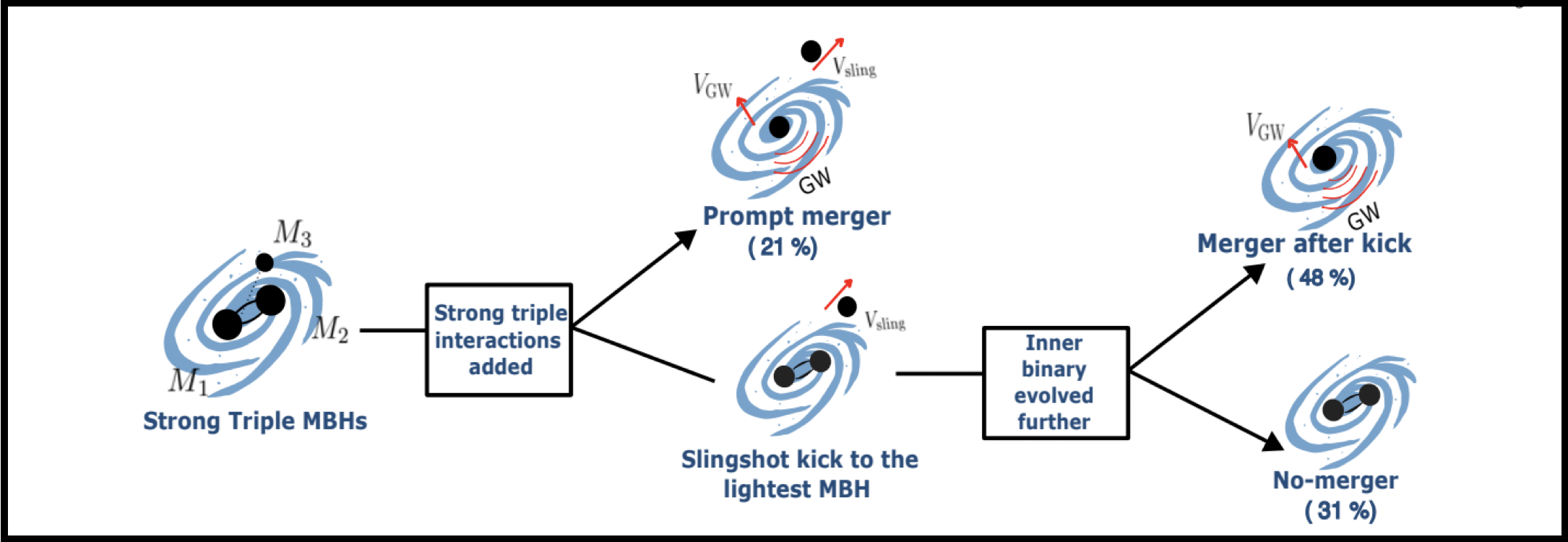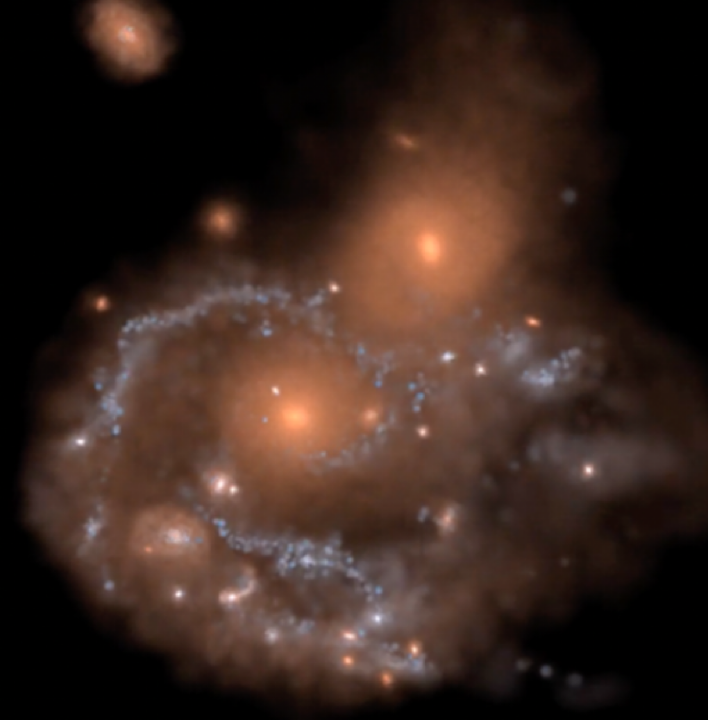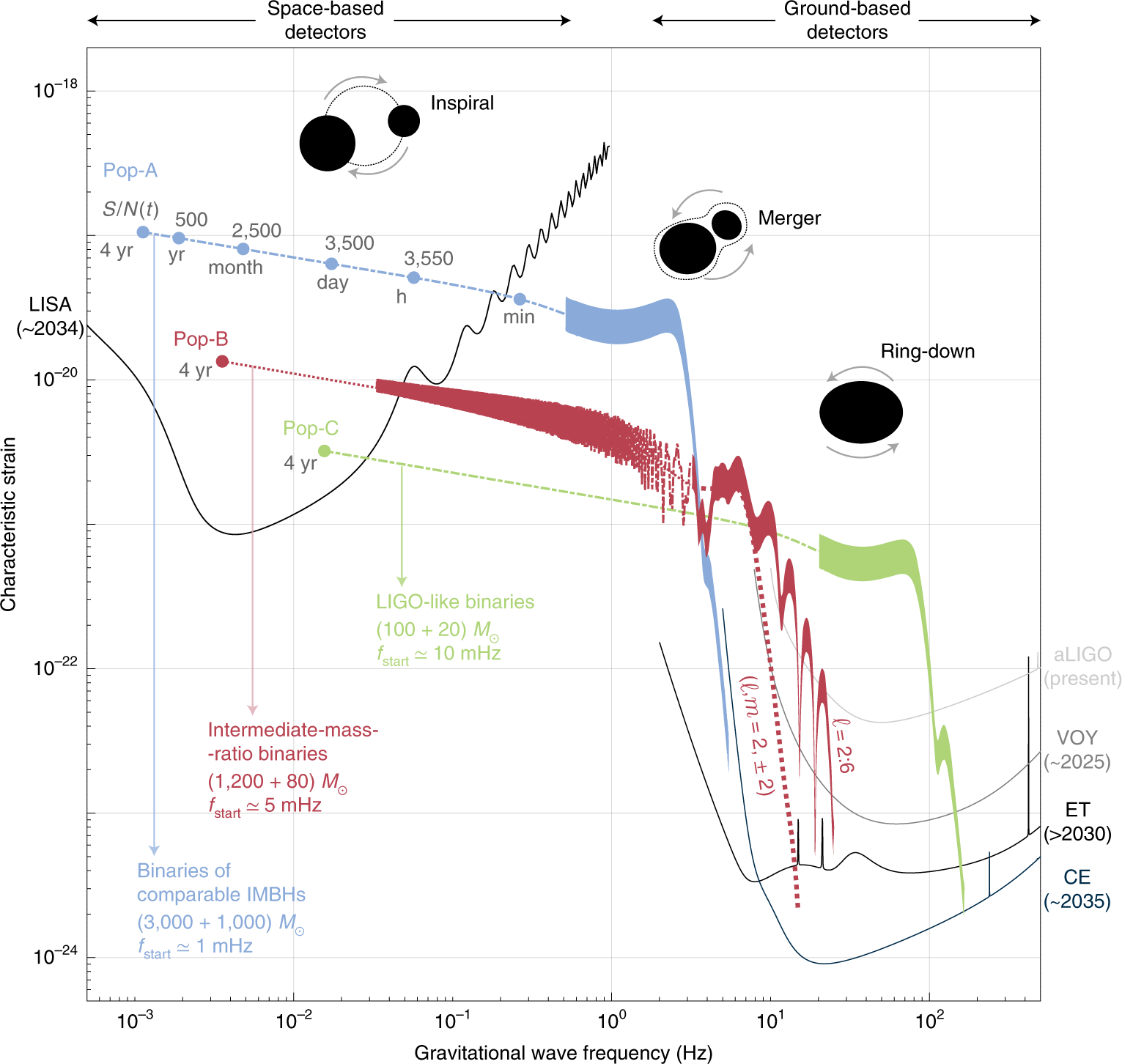Research
My research focuses on supermassive black holes (SMBHs) and galaxy evolution. I use cosmological simulations to study the co-evolution of SMBHs and their host galaxies throughout cosmic time. I also focus on the dynamics of SMBHs and mergers which produce gravitational waves observable by LISA and pulsar timing array experiments.
For a detailed overview of my projects see below. You can checkout my relevant publications here.



